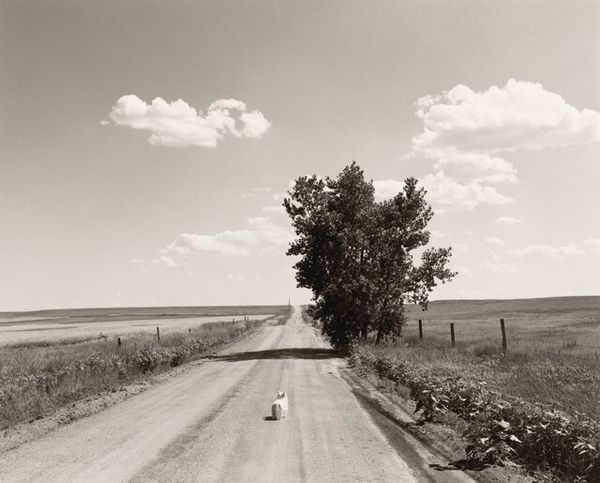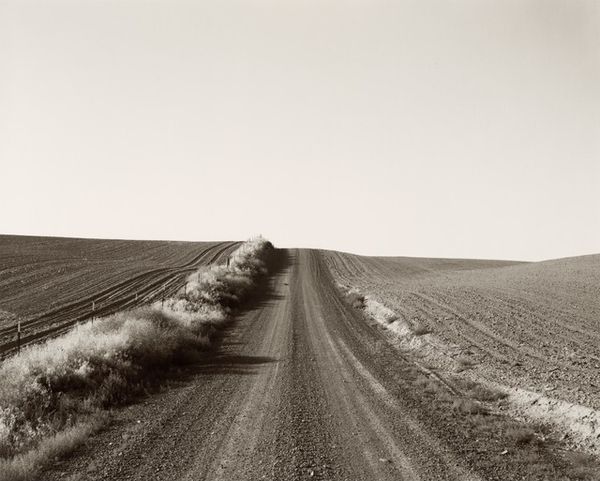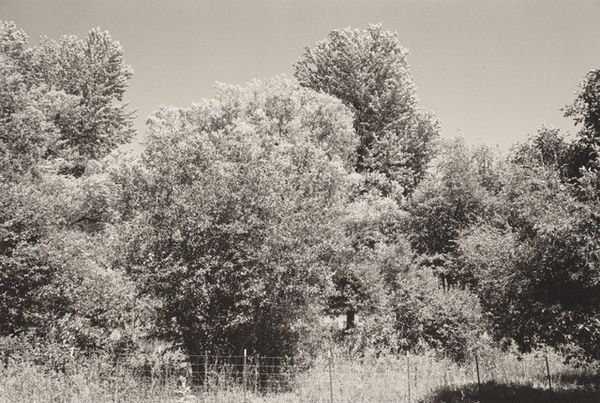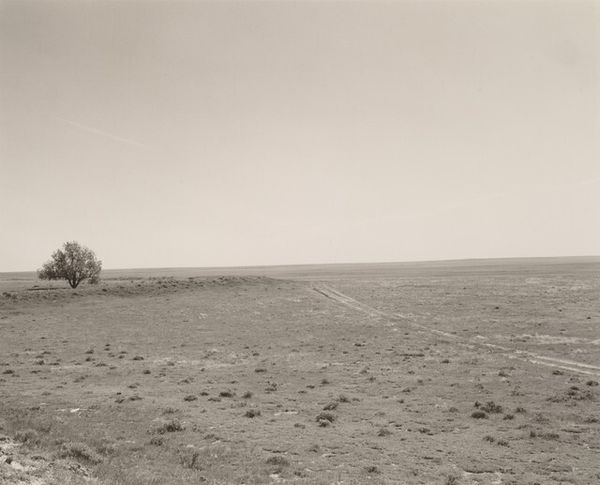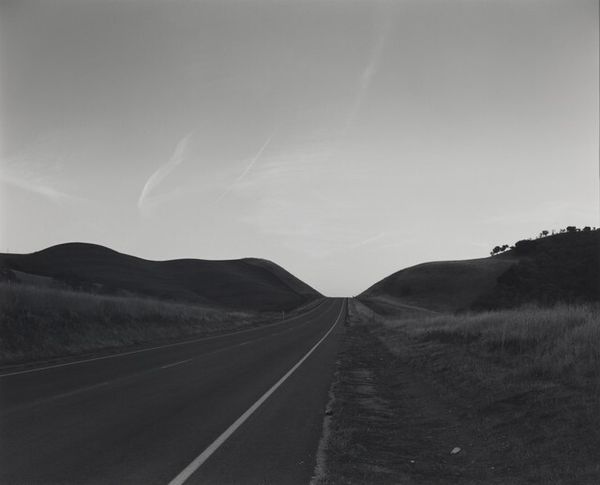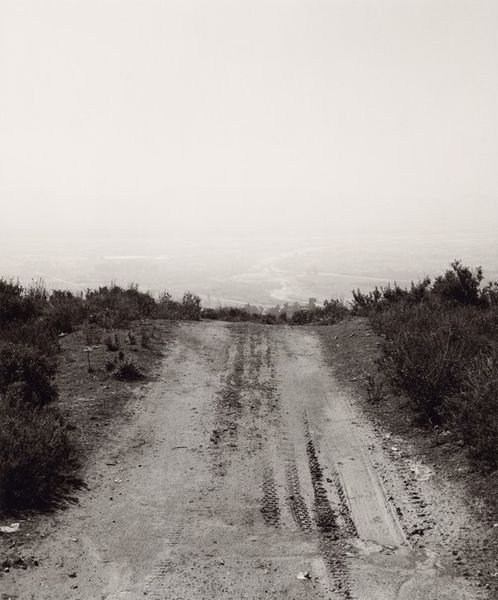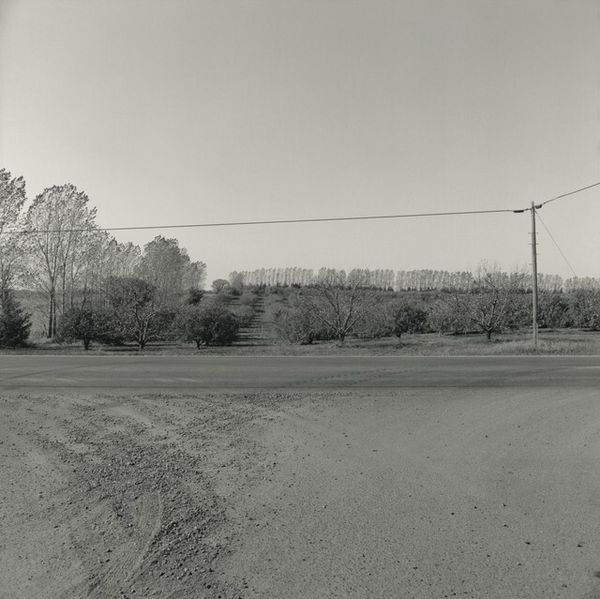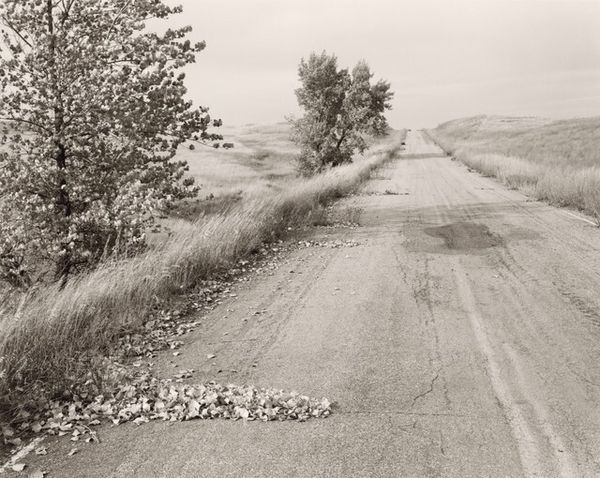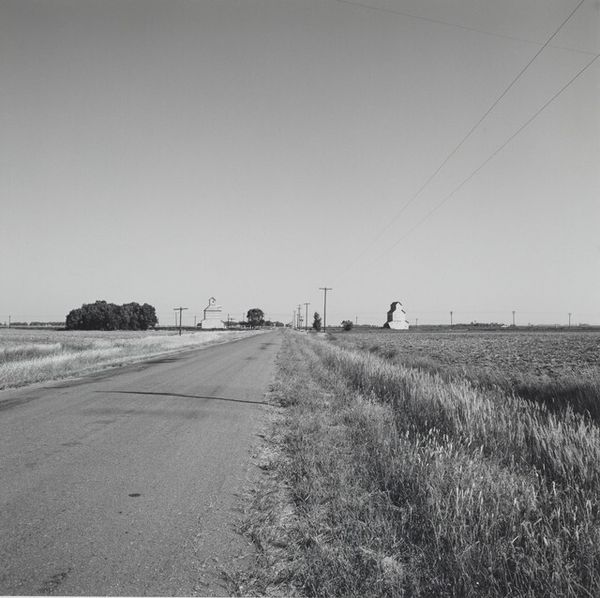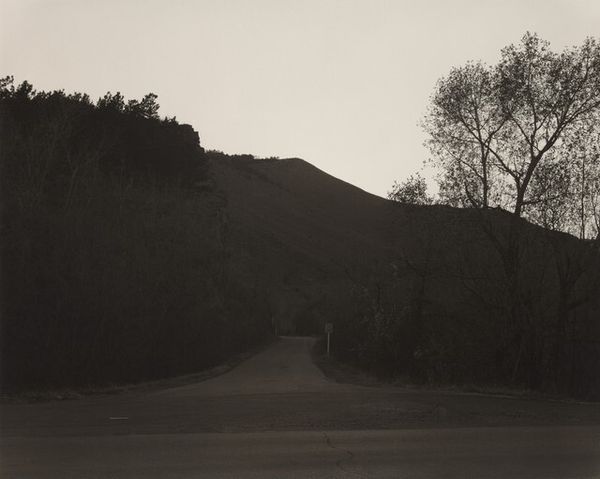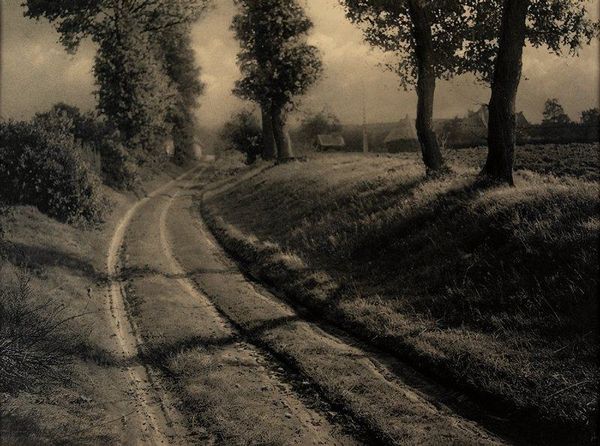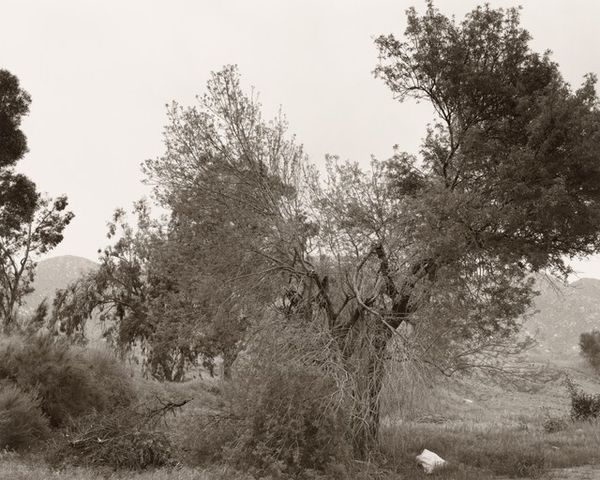
photography, gelatin-silver-print
#
black and white photography
#
landscape
#
black and white format
#
photography
#
gelatin-silver-print
#
monochrome photography
#
monochrome
#
realism
#
monochrome
Dimensions: sheet: 27.94 × 35.56 cm (11 × 14 in.) image: 22.86 × 27.94 cm (9 × 11 in.)
Copyright: National Gallery of Art: CC0 1.0
Curator: We’re looking at Robert Adams’ “Burns, Oregon,” a gelatin silver print from 1999. Editor: Immediately, I’m struck by how effectively Adams has used monochrome. It's very stark, almost clinical, but also rather elegant in its composition. Curator: Adams’ landscapes often deal with the intersection of nature and human intervention. Notice how the power lines bisect the composition, slicing through that seemingly endless horizon? There's a palpable tension here. It’s about modern intrusions on the rural experience. Editor: Exactly, it is interesting how these lines function as almost deliberate compositional interruptions, defying traditional notions of idyllic landscape photography. They also create these rhythmic patterns and the road draws the eye to that little speck of a mobile home far down in the horizon. Curator: Right, and that road, in a symbolic sense, carries so much cultural weight in American mythology, often seen as a promise of possibility, a link to the frontier... but here it leads to something quite banal, perhaps even isolating. It brings to mind an echo of the classic images of the West, but emptied, disillusioned. Editor: True, there is a stark, understated beauty here, but the restrained palette emphasizes texture. Consider the roughness of the road compared to the smooth gradation in the sky. Also the verticality of the dense rows of trees which makes for a very compelling formal interplay. Curator: Those trees along the roadside become sentinels, almost tombstone-like, don't they? The greyscale contributes to the weightiness, making it feel almost like an artifact unearthed from the past. It speaks to both the past and the environmental implications of how landscapes can undergo a change across time and generations. Editor: Ultimately, I think Adams really excelled in creating that unsettling tension through contrasting form and absence in an otherwise deceptively straightforward landscape. Curator: It certainly makes us reflect on how we idealize the concept of open land when the evidence may suggest something more ambiguous and complex is taking shape, isn't it?
Comments
No comments
Be the first to comment and join the conversation on the ultimate creative platform.

